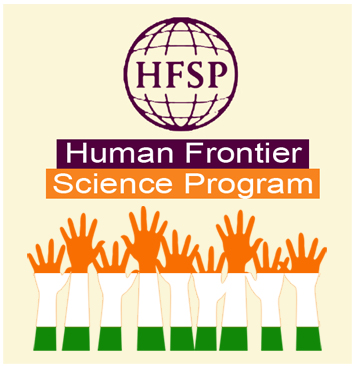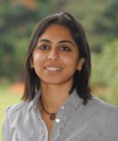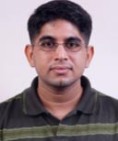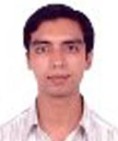Human Frontier Science: India trying to fly high in the global sky!
India is enthusiastically committed to this multilateral programme of collaboration in the fundamental life sciences, and Indian scientists are applying in large numbers, but success rates are as yet low…

When Roman Stocker at Massachusetts Institute of Technology (MIT)in the USA and Assaf Vardi at the Weizmann Institute of Science in Israel took the surprisingly sophisticated collage of a coral-derived ‘whirlpool’ while showing how coral polyps maintain their micro-environment, they may not have guessed that they could be up for a major international science prize.
To their pleasant surprise they, together with their post-docs Vicente Fernandez, Orr Shapiro and Melissa Garren have won the NSF/AAAS International Science & Engineering Visualization Challenge in the photography category. The winning image has been selected for the cover of Science magazine (7 February 2014, Vol. 343, #6171).
Notably, Stocker and Vardi are grant awardees of the Human Frontier Science Programme (HFSP), in which India is deeply involved as one of the funding nations. This visualisation challenge award is but one example of the many kinds of exciting work that is possible with HFSP grants.
Yet another example is the fact that all the Nobel laureates in physiology and medicine this year, James Rothman, Randy Schekman and Thomas Sudhof, have been HFSP grant awardees; in fact, over its short quarter-century lifespan, HFSP has funded twenty-three Nobel laureates!
But the HFSP programme is yet to see significant successes for Indian scientists in terms of grants received. The long list of 2014 awardees (released on March 20) under Research Grant Awards (thirty four of them), Career Development Awards (twelve of them), Long Term Fellowships (eighty of them) and Cross-Disciplinary Fellowships (ten of them) sees only a scattering of researchers from Indian institutions.
Congratulations go to these rarities: Yamuna Krishnan from National Centre for Biological Sciences, Tata Institute of Fundamental Research Bangalore (NCBS-TIFR) who is the lead investigator on a research grant awarded for studying the mechano-chemistry of biological membranes with colleagues from the USA, Denmark and France; to Arpan Kumar Rai and Dhananjay Huilgol (TIFR Mumbai) and Dhiraj Bhatia (from NCBS-TIFR) Bangalore, who are going on long-term fellowships to the University of Zurich in Switzerland to study the biophysics of kinase cycling, to the Cold Spring Harbour Laboratory in the USA to study brain development and to the Curie Institute in France to study membrane biophysics respectively.
Yamuna Krishnan Arpan Kumar Rai Dhananjay Huilgol Dhiraj Bhatia
There have been few other awardees from India in past years, but they cover a small set of talented predictable ones, who bothered to compete.
Congratulations also go to the wonderful oddities in the cross-disciplinary fellowships category; to Sebastian Fuerthauer, an Austrian national who is going from TIFR Hyderabad to New York University in the USA to work on the mathematics of spindle shape computation, and to Anupam Sengupta, an Indian currently working at the Max Planck Institute (MPI) in Germany, who is going to MIT in the USA to work on the biophysics of microbial nutrient uptake.
Sebastian Fuerthauer Anupam Sengupta,
There is another obviously Indian-sounding name, that of Sachdev Sidhu, who is a Canadian working at the University of Toronto, Canada.
The HFSP is an international programme of research support for interdisciplinary approaches to the elucidation of the sophisticated and complex mechanisms of living organisms at all levels of complexity: from individual bio-molecules up to interactions between organisms.
And the HFSP thinks that this is best done through international cooperation.The member countries of the HFSP, the so-called Management Supporting Parties (MSPs) are the governments of Australia, Canada, France, Germany, India, Italy, Japan, Republic of Korea, Norway, New Zealand, Switzerland, the United Kingdom, the United States of America and the European Union, which contributes on behalf of the non-G7 EU members.
HFSP puts great store by highly imaginative high-risk research approaches, and obviously, young researchers form a key element of the HFSP strategy.
It spans the entire working career of a scientist; it supports post-doctoral fellowships in countries other than the student’s own; it supports the HFSP post-doctoral fellows with career development awards for doing exciting work as they make the transition to their own research groups, preferably in their home countries; and it provides for researchers everywhere, in many different disciplines, who have never met or worked with each other to come up collegially with extraordinary ideas about biological mechanisms to test.
The HFSP ethos also encourages funded research outcomes to be freely available in creative commons-like ways that allow others to build upon them. This is among the best efforts to democratise knowledge, which is a key ethical demand in the realm of science today globally.
The government of India has strongly supported the programme for many years now; the Department of Biotechnology and the Department of Science and Technology provide the Indian contribution, and they are very committed to this support for global collaborations. Is the Indian research community equally excited about these opportunities, and is it talking advantage of India’s HFSP membership?
The latest data do show that growing numbers of applications to HFSP are now being received from India along with Germany, France, Spain, Israel and Japan. Yet,India lags far behind the countries most successful in obtaining grants, such as Germany, Israel and Switzerland.
And this is what needs to change. We have a strong bench of brilliant scientists in the country; biologists, chemists, physicists. In them, we have the base to begin exciting forays into the world community of scientists, to work together with new friends worldwide on truly transformative ideas that will change the way mankind looks at the world, and in the process, the way the world looks at India.
For if HFSP is not the embodiment of the old adage of ‘vasudhaiva kutumbakam’ (all world is our family) for scholars trying to understand the life around us and in us, what is?








Please correct the spelling of Planck (Max Planck Institute) in this press article. The ‘C’ is missing in Planck. Thanks !
Thank you for the correction.